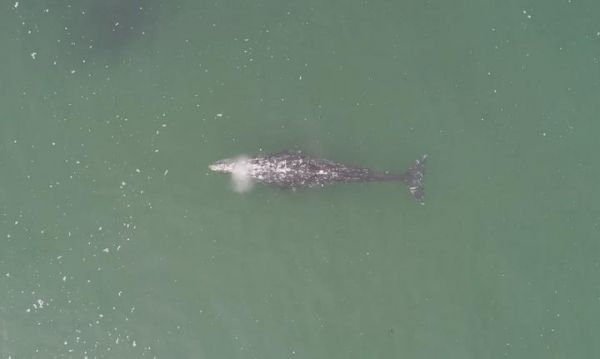Three years of “health check-ups” on Oregon’s summer resident gray whales shows a compelling relationship between whales’ overall body condition and changing ocean conditions that likely limited availability of prey for the mammals, a new study from Oregon State University indicates.
Researchers from the Geospatial Ecology of Marine Megafauna Laboratory at OSU’s Marine Mammal Institute used drones to monitor 171 whales off the Oregon Coast during the foraging season between June and October in 2016, 2017 and 2018.
They found that the whales’ health declined following a period of relatively poor upwelling – an ocean condition that brings colder, nutrient-rich water closer to the surface – compared to previous years.
“What we see is this compelling relationship between the oceanographic processes that control the quality and quantity of available prey and whale health,” said Leigh Torres, an assistant professor with the Marine Mammal Institute and the lab’s director. “This research gives us an inclination that changes in ocean conditions might be causing skinny whales.”
Read more at: Oregon State University
Researchers using drones capture images like this to help them calculate whale health using the Body Area Index, which is similar to the Body Mass Index, or BMI, in people, because it allows comparisons across individuals despite differences in height and length. Image captured through drone recording. Video was recorded by Todd E. Chandler, faculty research assistant, Marine Mammal Institute, Oregon State University. This research was conducted under NOAA/NMFS permits #16011 and #21678 issued to John Calambokidis. (Photo Credit: GEMM Lab, Oregon State University)


